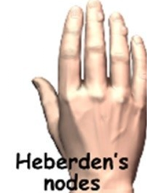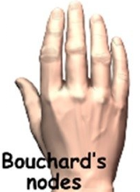Anatomy of the Hand and Wrist
A total of 27 bones constitute the basic skeleton of the wrist and hand. The hand is
innervated
by 3 nerves — the median, ulnar, and radial nerves — each of which has sensory and motor
components.
The bones in the palm of the hand are called metacarpals. One metacarpal connects to each
finger
and thumb. Small bone shafts called phalanges line up to form each finger and thumb.
The main knuckle joint is formed by the connection of the phalanges to the metacarpals. This
joint is called the MCP joint. This joint acts like a hinge when you bend and straighten
your
fingers and thumb.
The wrist meanwhile is a collection of many bones and joints. It is probably the most
complex of
all the joints in the body. There are 15 bones that form connections from the end of the
forearm
to the hand. The wrist itself contains eight small bones, called carpal bones.
Arthritis of the Finger Joints
Introduction
When you stop to think about how much you use your hands, it’s easy to see why the joints of
the
fingers are so important. Arthritis of the finger joints has many causes, and arthritic
finger
joints can make it hard to do daily activities due to pain and deformity. Unbearable pain or
progressive deformity from arthritis may signal the need for surgical treatment













